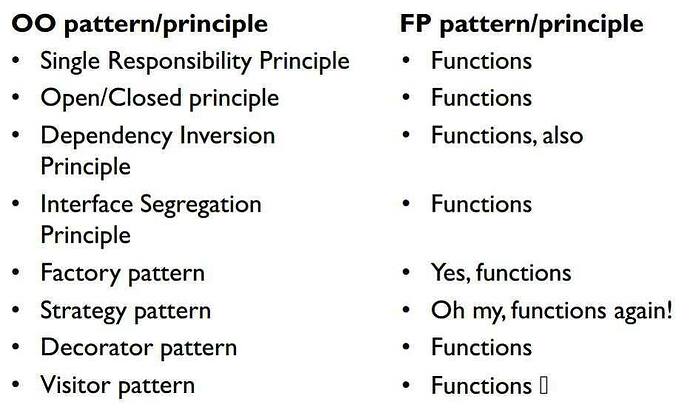SRP is everything!  everything!
everything!
Level 1 is the application.
Level 2 are the modules. They break the application apart and their names describe the single problem every one of them is trying to solve.
Level 3 are high level functions. They break the module problem into small steps and their names describe those steps.
Level 4 are the low level functions. They do the actual work and are often one liners, at worst 3.
So when I read my code I go to the main file and look at the module names to recall what’s going on.
Then it’s just a matter of following the module names and function names down the line to add or change stuff.
I love this approach because I don’t like writing tests and I don’t like writing comments.
Why write a unit test for the + sign? It will add two numbers (in every respectable language) right?
Then come the function names which are a living documentation, no need for comments.
def add_two_numbers do end done!
Higher level functions only describe the steps taken to solve a problem, no work is done there.
If there’s a problem, you can instantly tell where it is, because all the work is done in low level functions, and if it’s a logic problem, then it’s a logic problem, and it’s easy to spot because all low level functions must work, which they always should if done right. 1+1 should always work right? (in every respectable language)
In other words, I feel like “comments”, “unit tests”, “types”, “specs”, and so on, are the crutches of the lazy programmer, who didn’t break the top problem into small modules,didn’t write functions that describe the steps taken to solve the problem, didn’t write low level functions that are so simple it’s impossible to have an error, and they just want to write code like this “oifaofiapodihfhopahpofhopasphofhogihasjuivfhus” and then go oh my unit test will help me, and look at all the types I have, the compiler will catch stuff, and check out my 5 pages of unintelligible comments describing my amazing “isdjfhpsaohgapoigaofghpg” code.
Why write comments when I can write verbose names for modules and functions, and if names become too long, then it’s obvious the module or function is trying to solve too much, break it down further, done!
Anyway, I bet I’ll get some heat for this, but it’s ok  I write my code, I love my code, I love, love, love, my code. Did I mention that I love my code? I want to hire a racing horse to kick me on the head when reading other people’s code <3 not your code dear reader! Your code is nice because it’s Elixir and SRP ; )
I write my code, I love my code, I love, love, love, my code. Did I mention that I love my code? I want to hire a racing horse to kick me on the head when reading other people’s code <3 not your code dear reader! Your code is nice because it’s Elixir and SRP ; )


 everything!
everything!





















